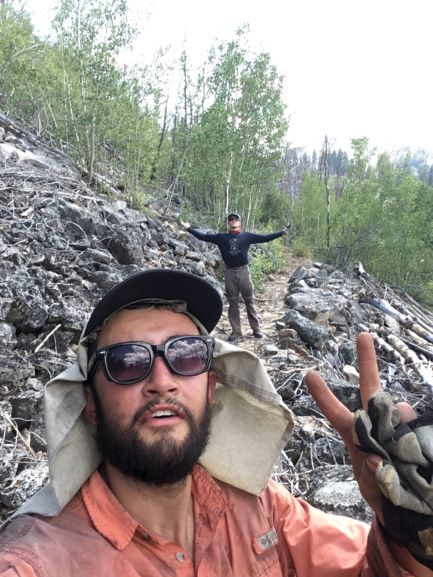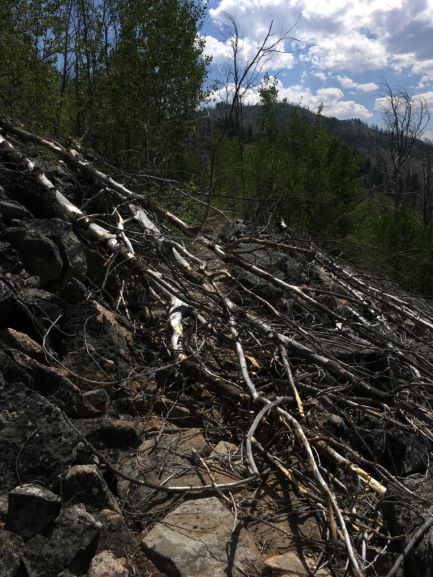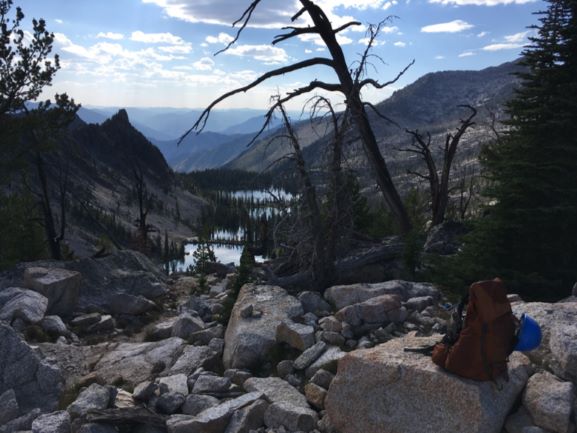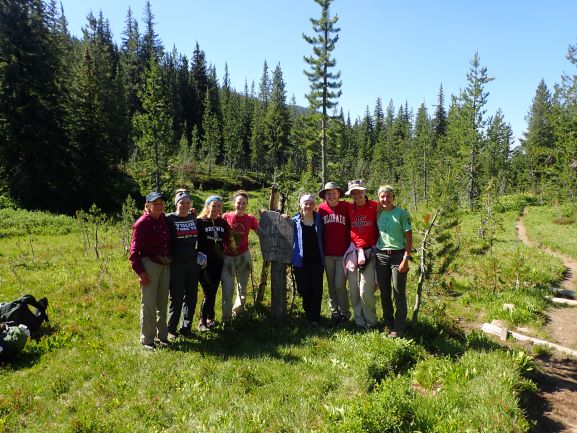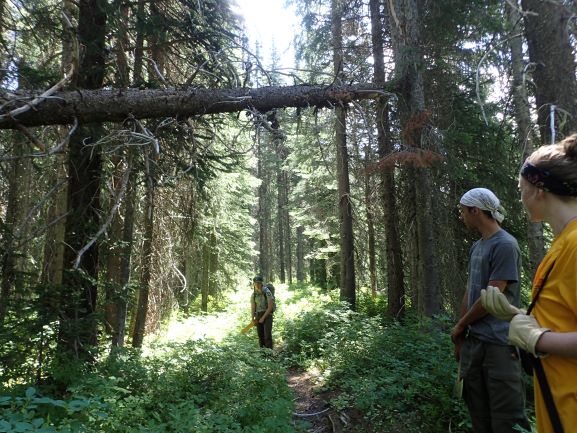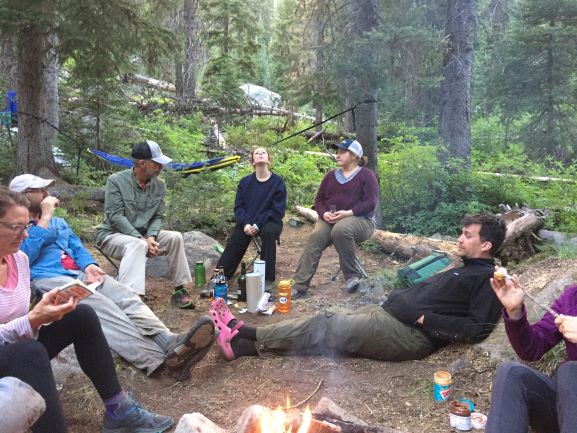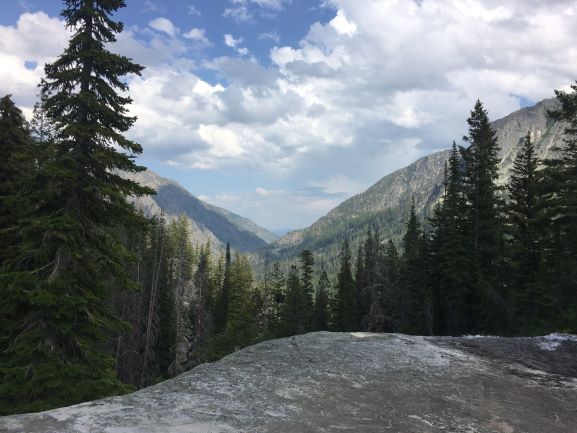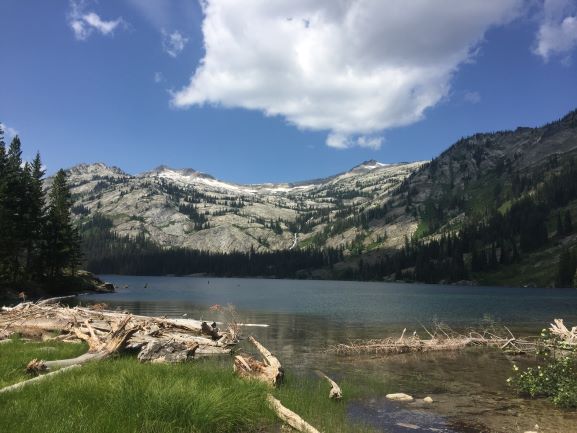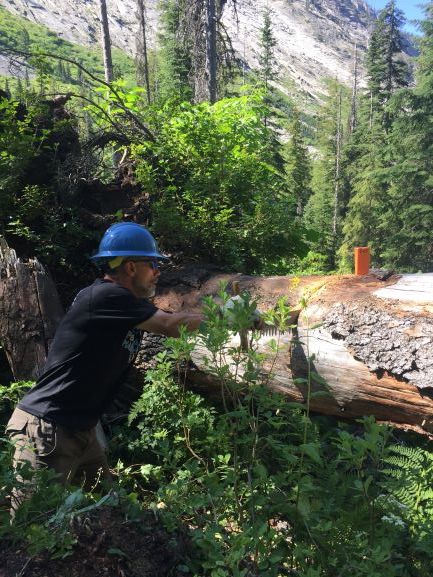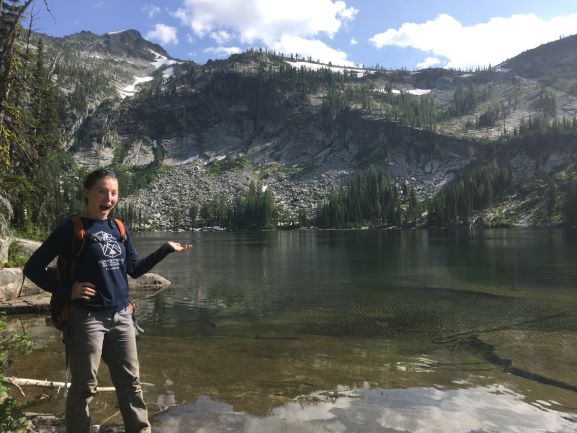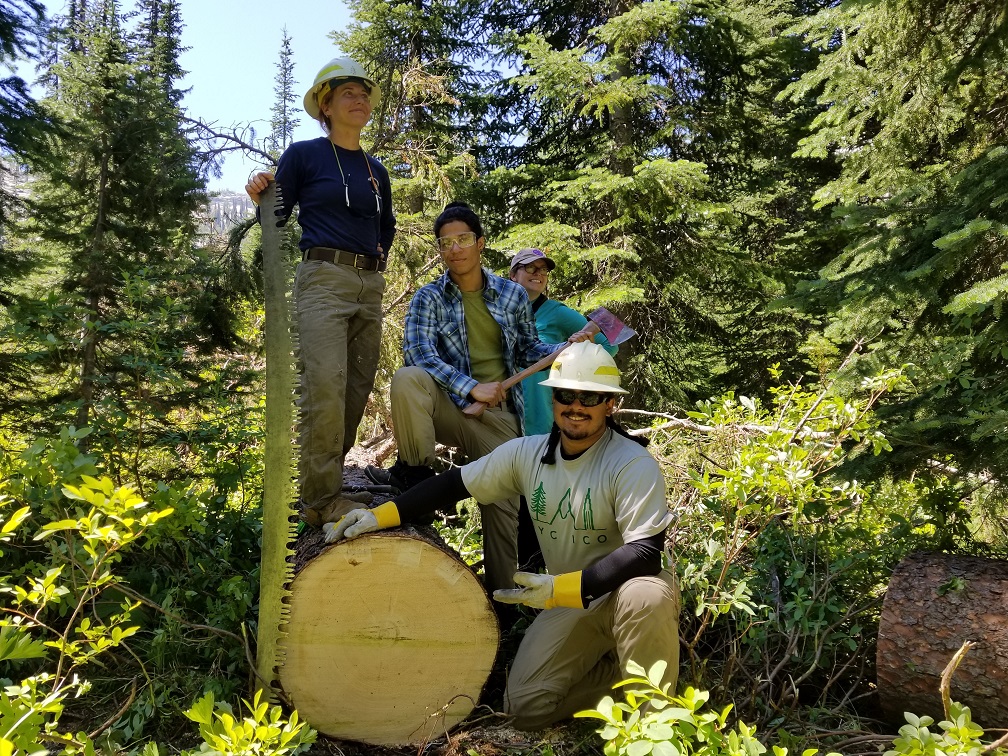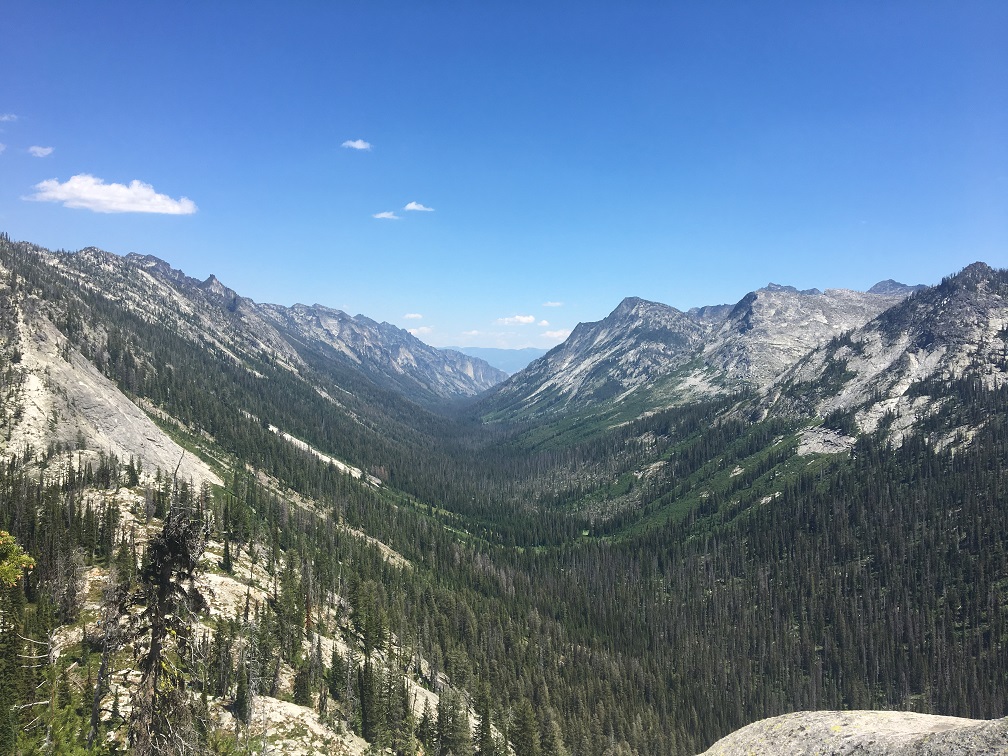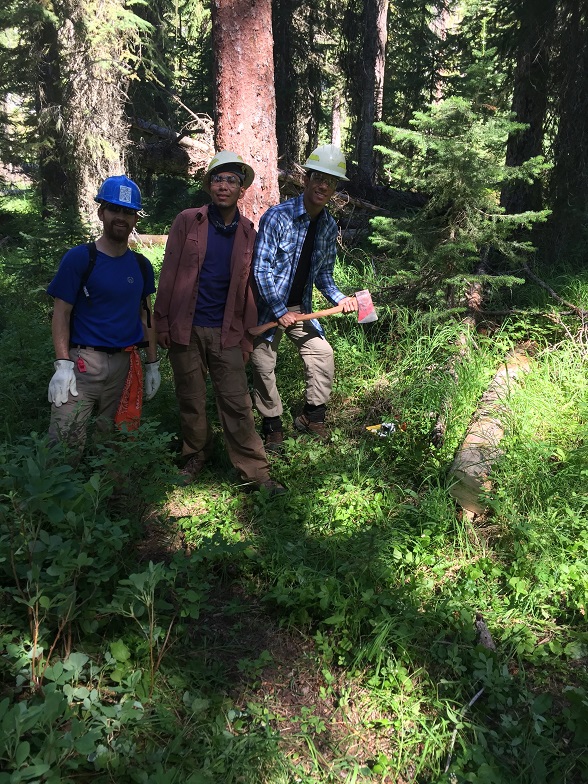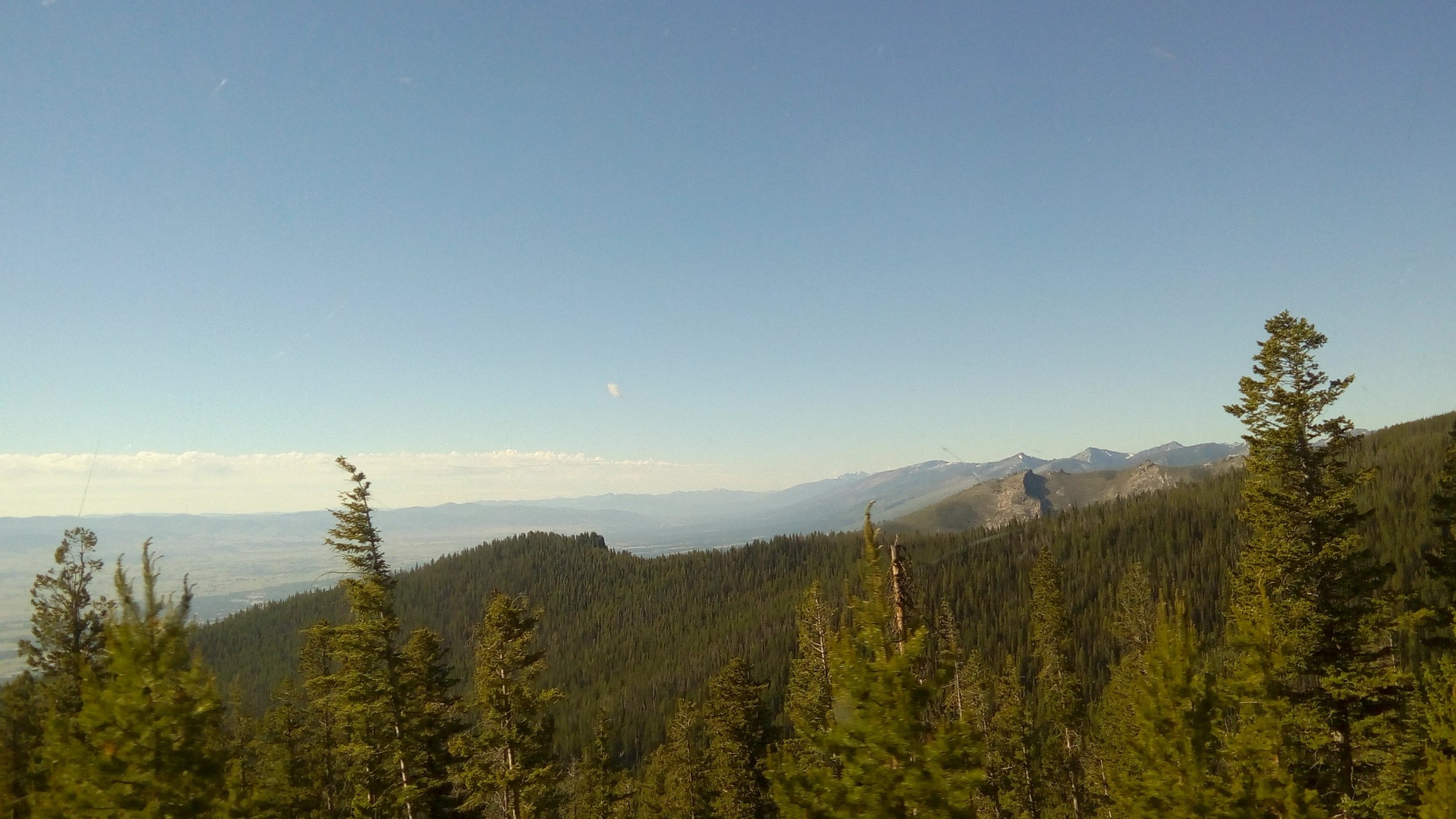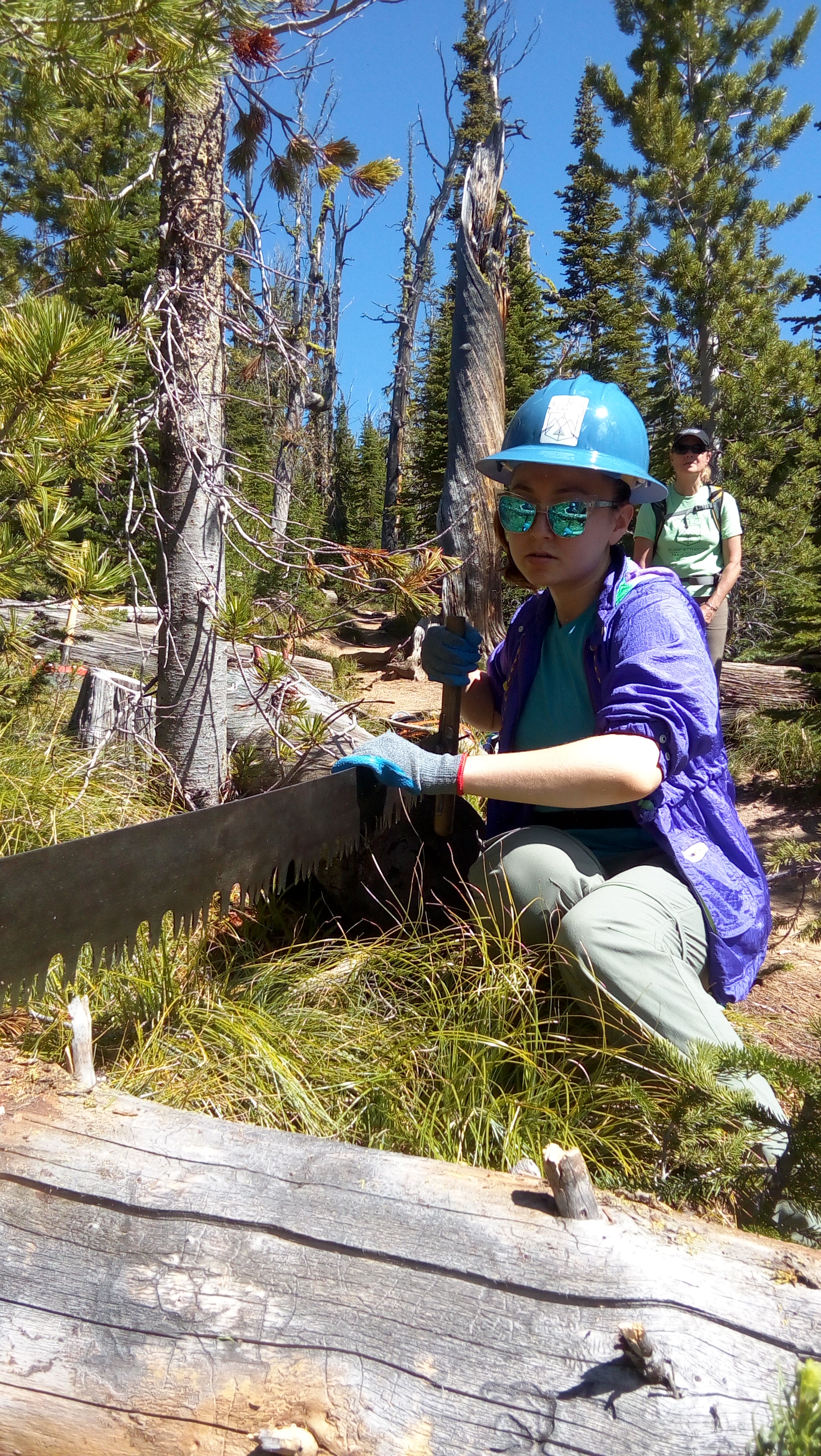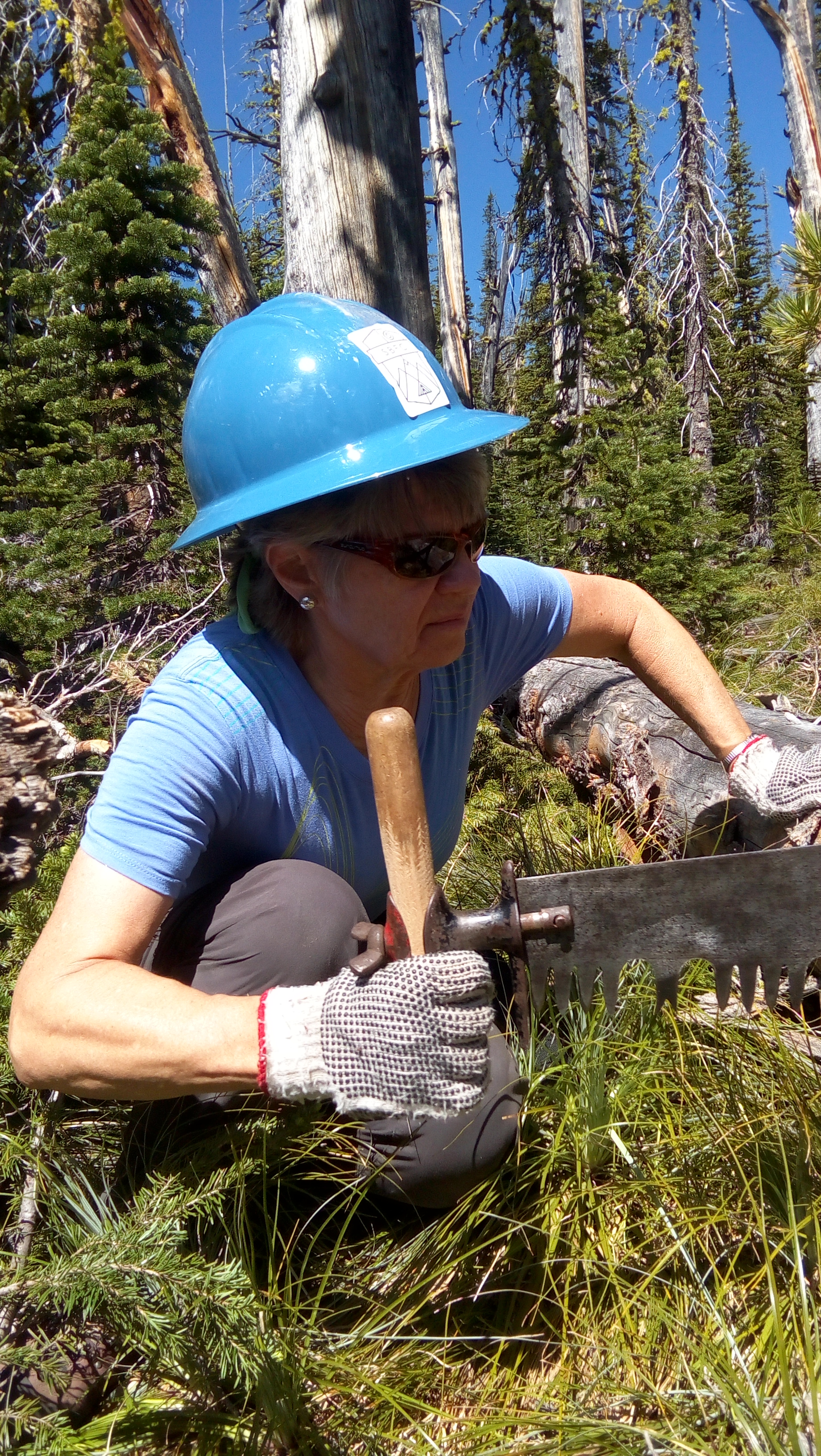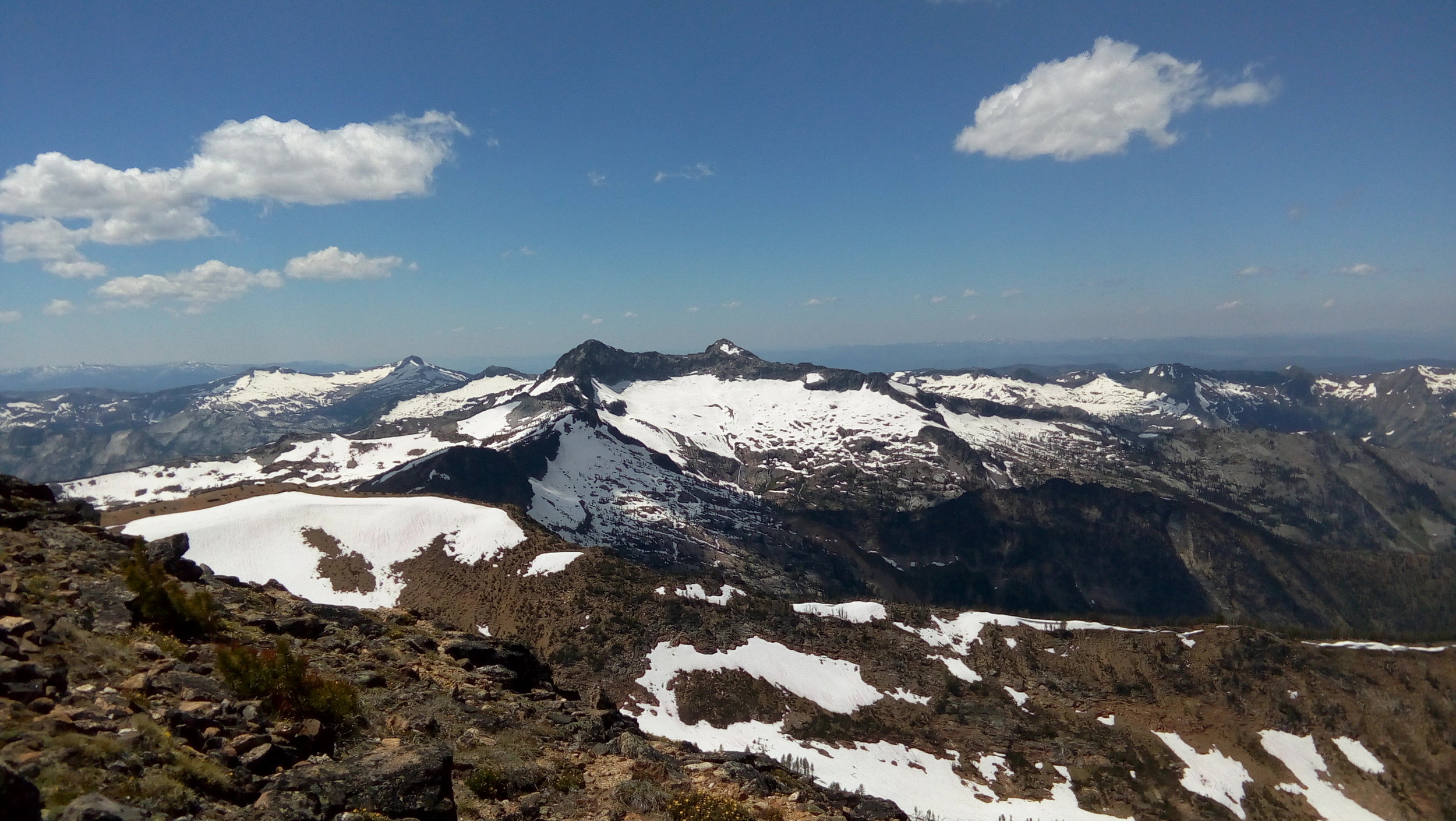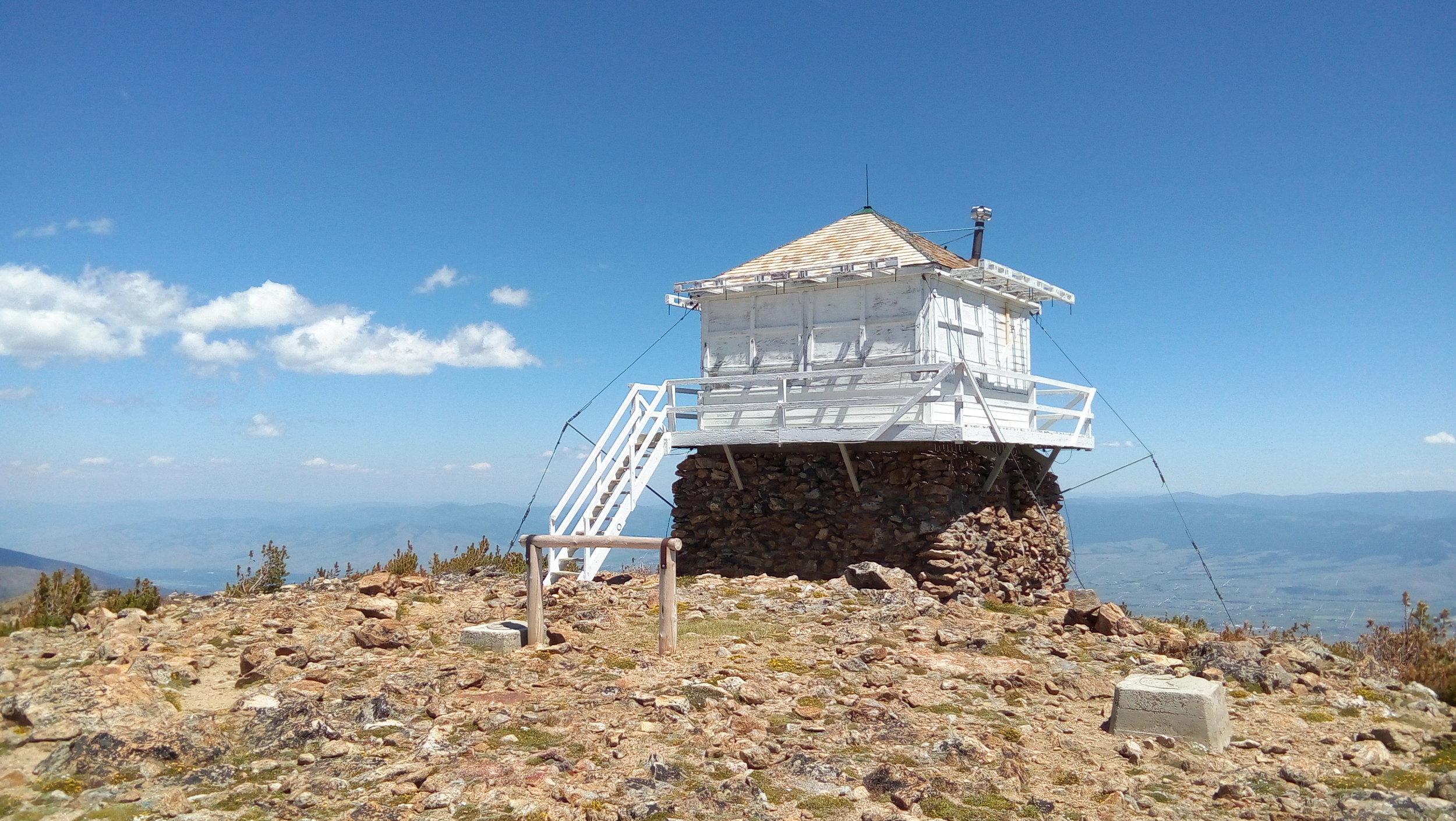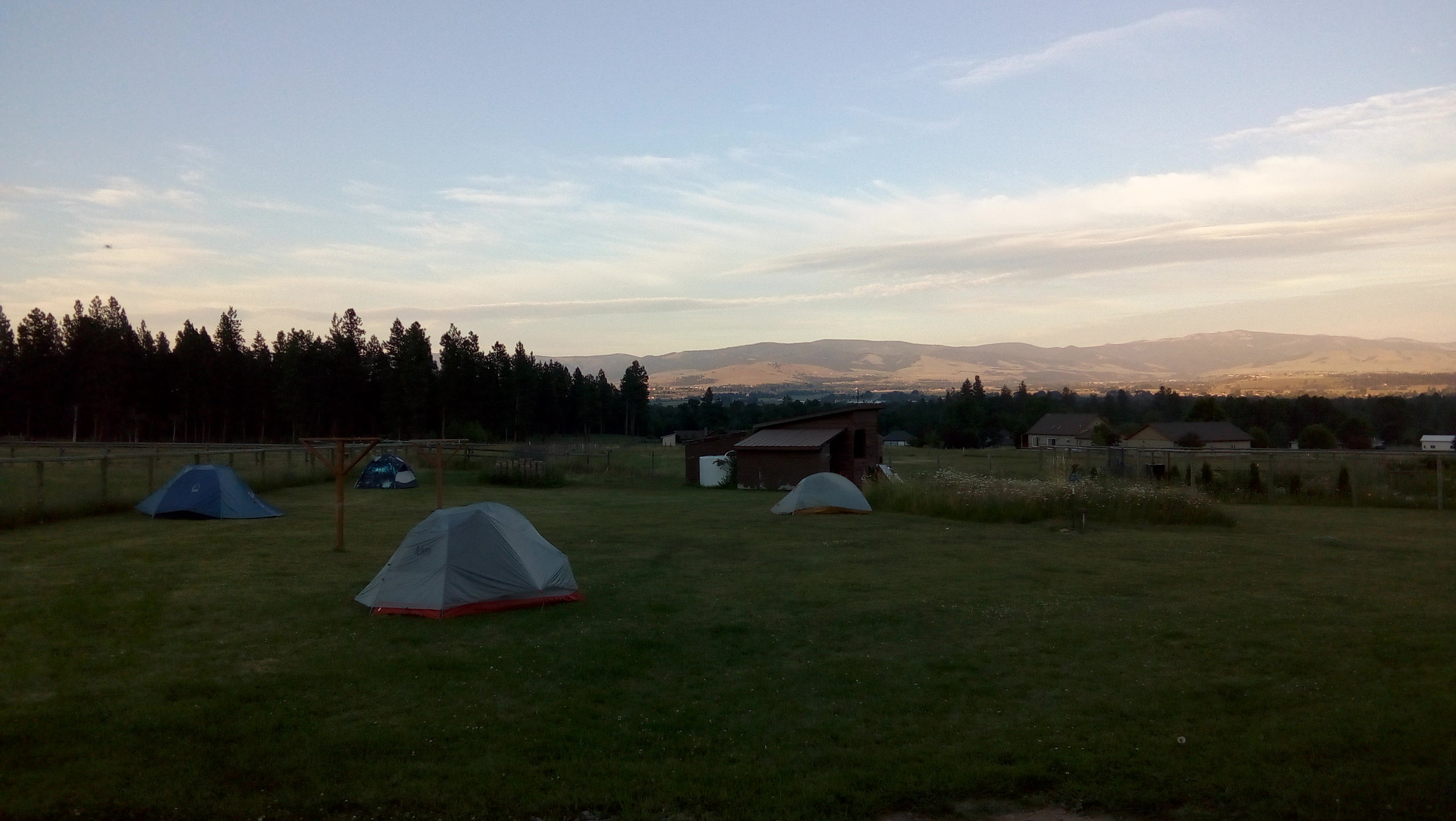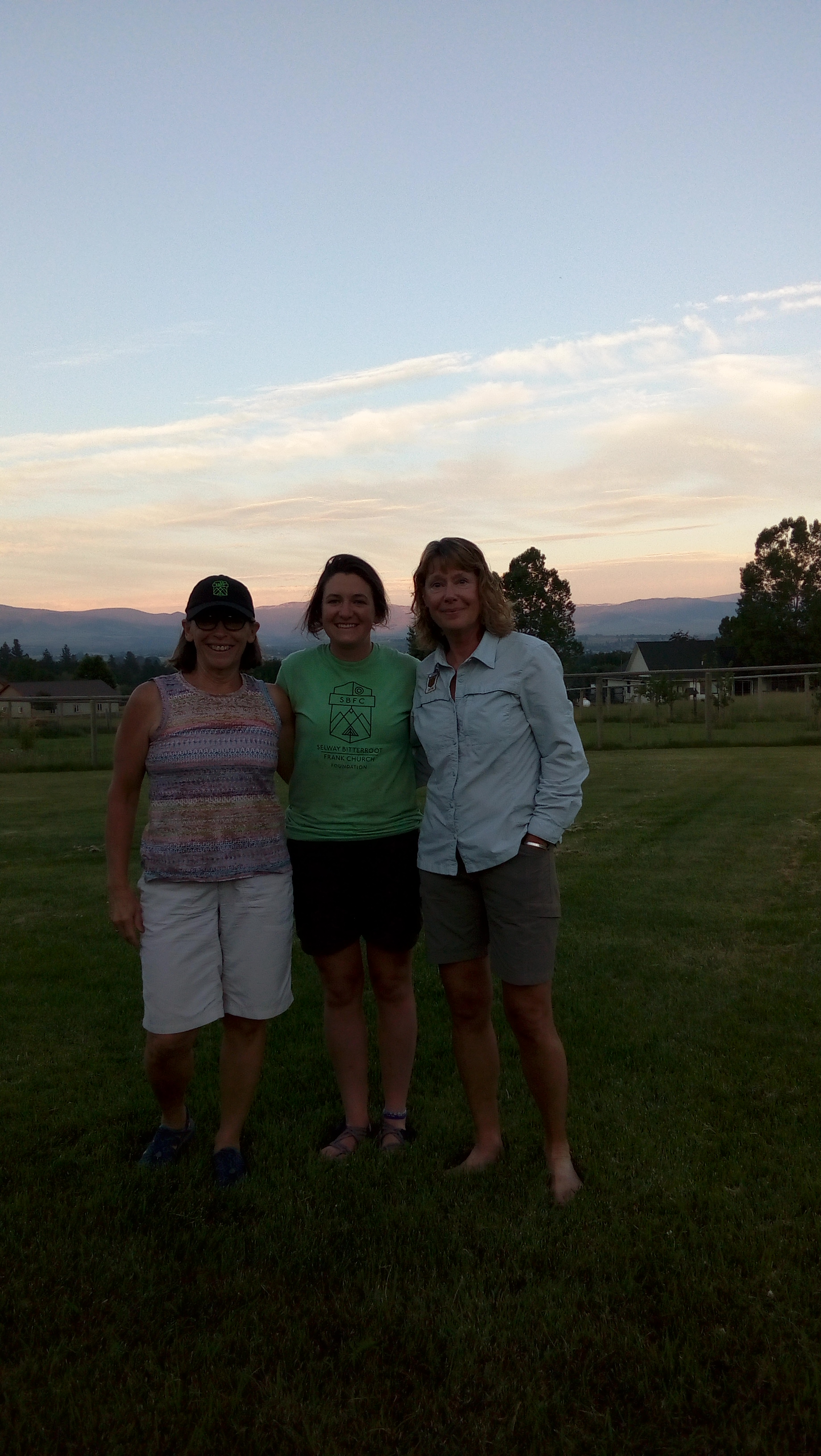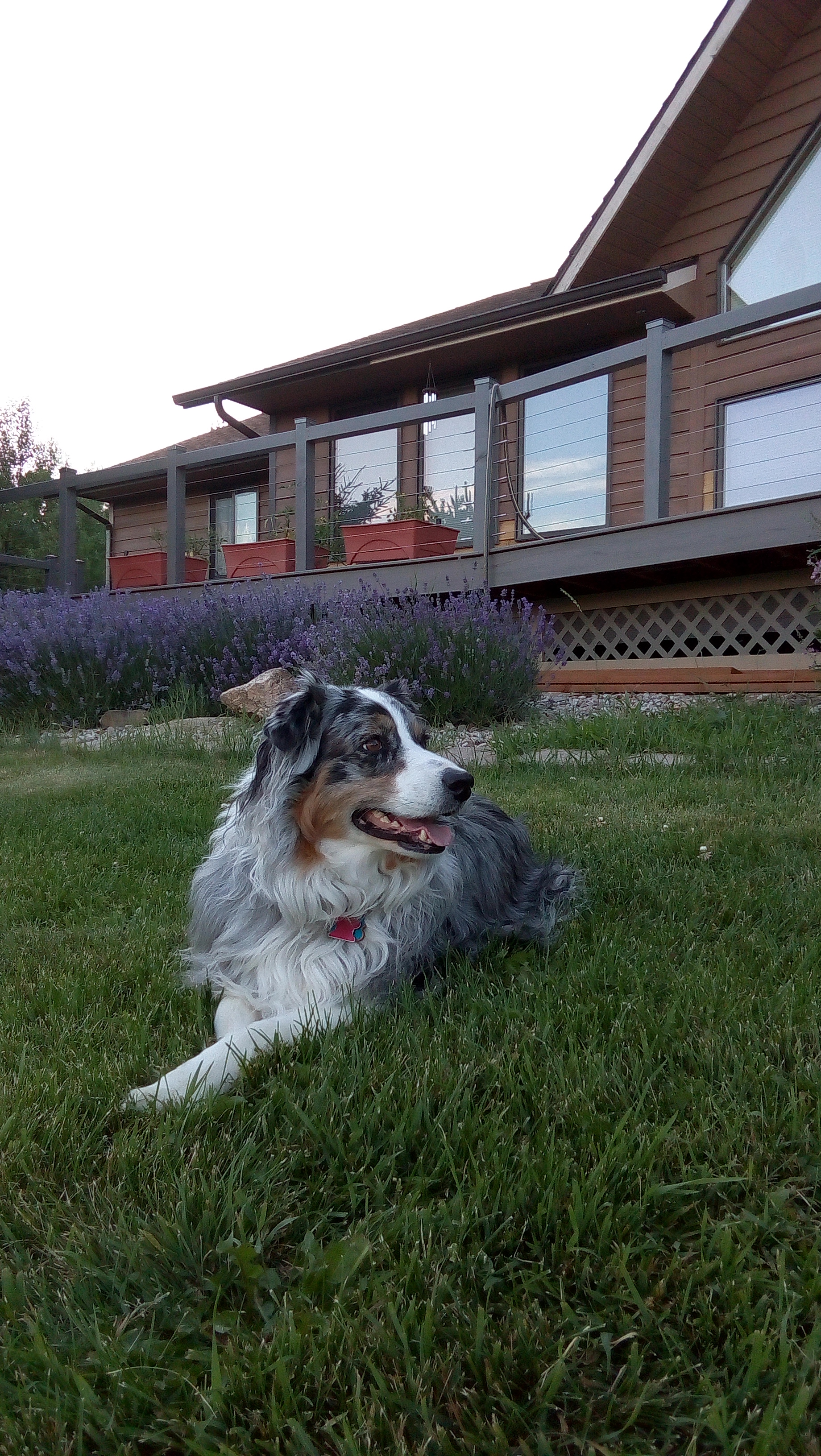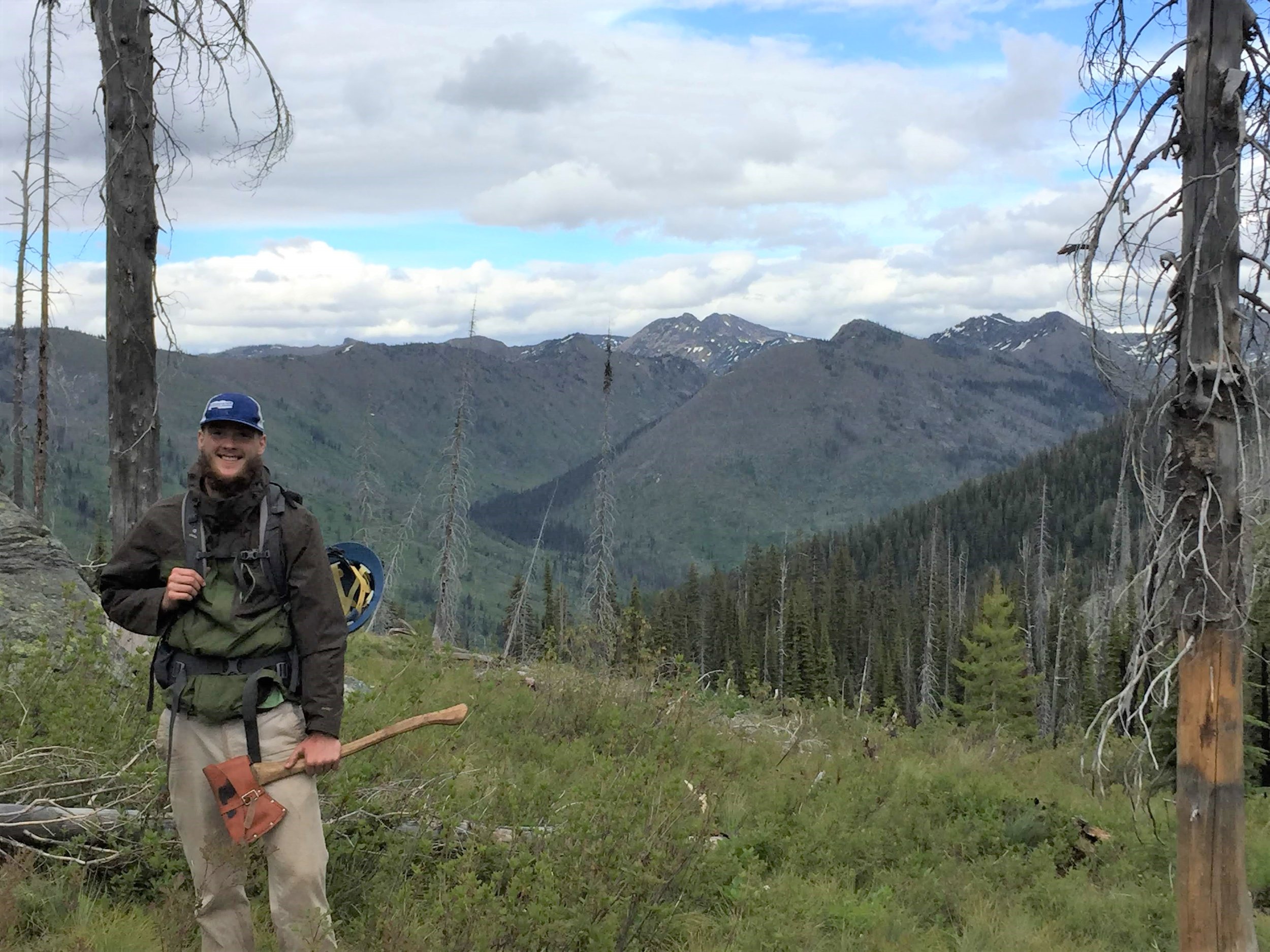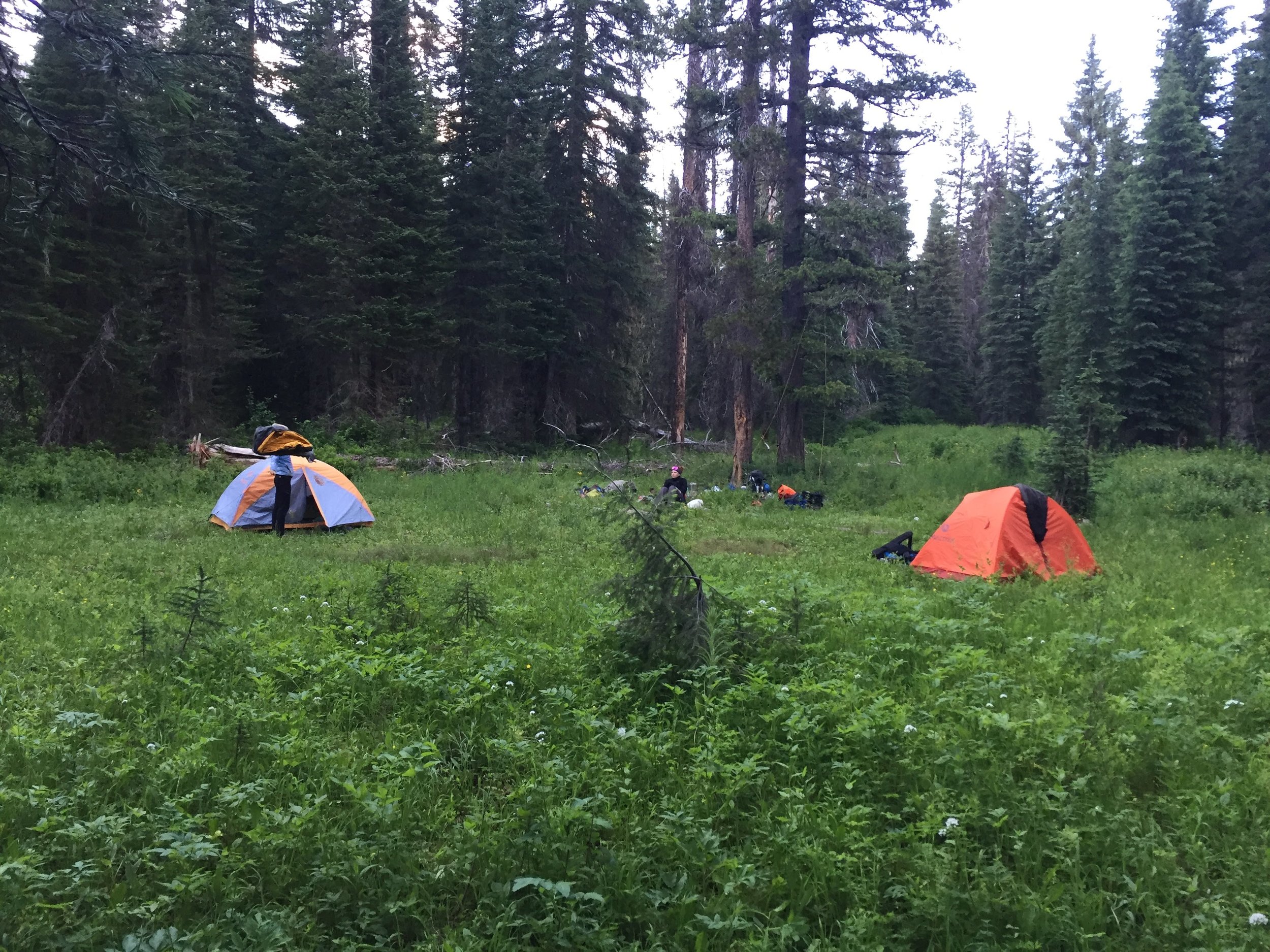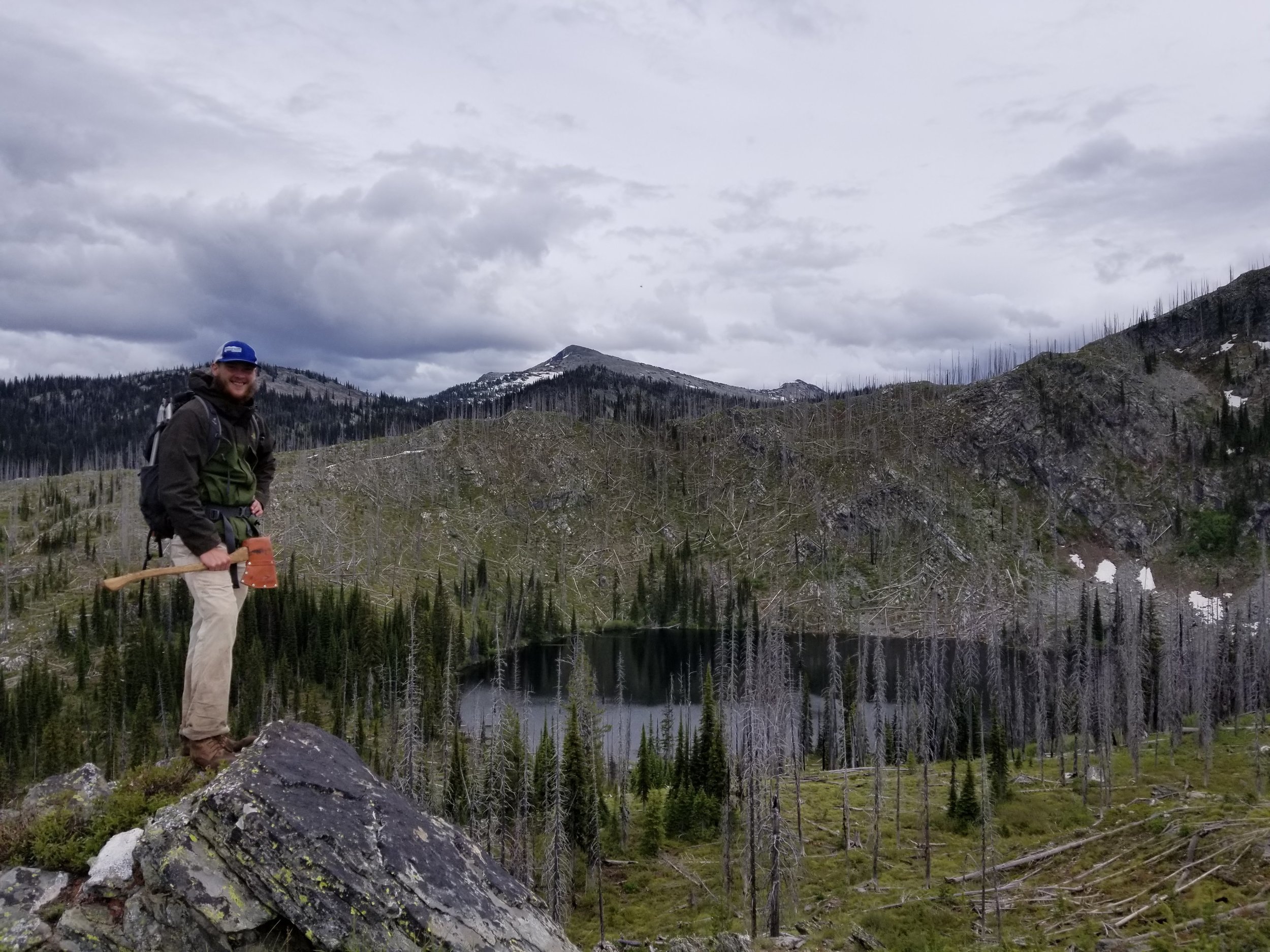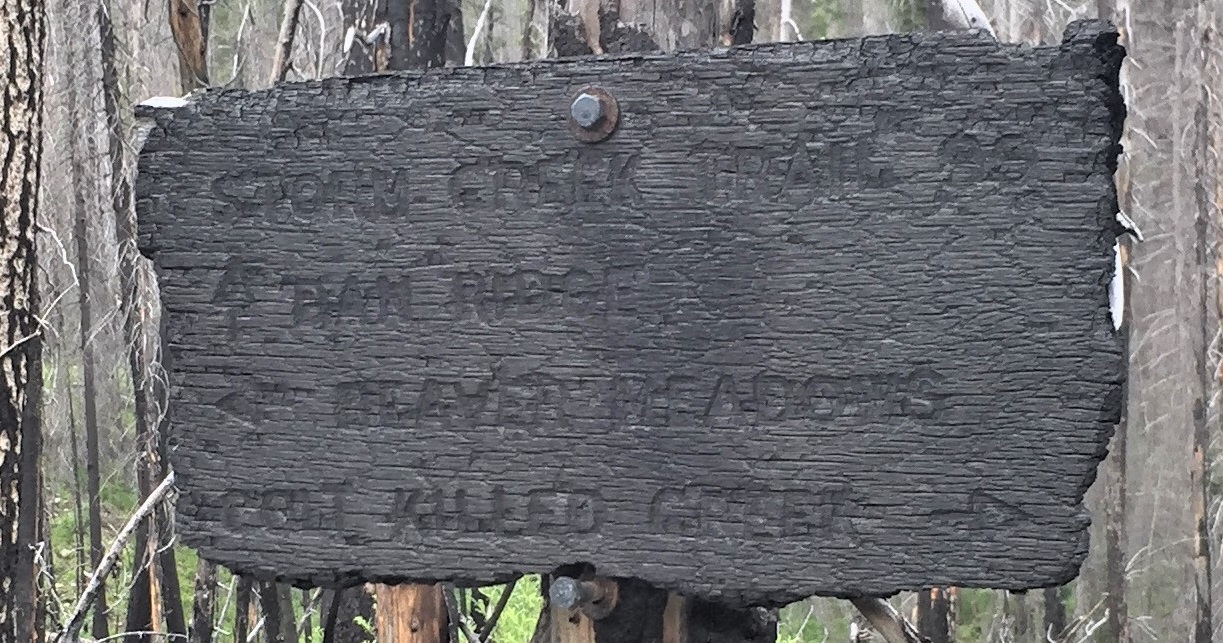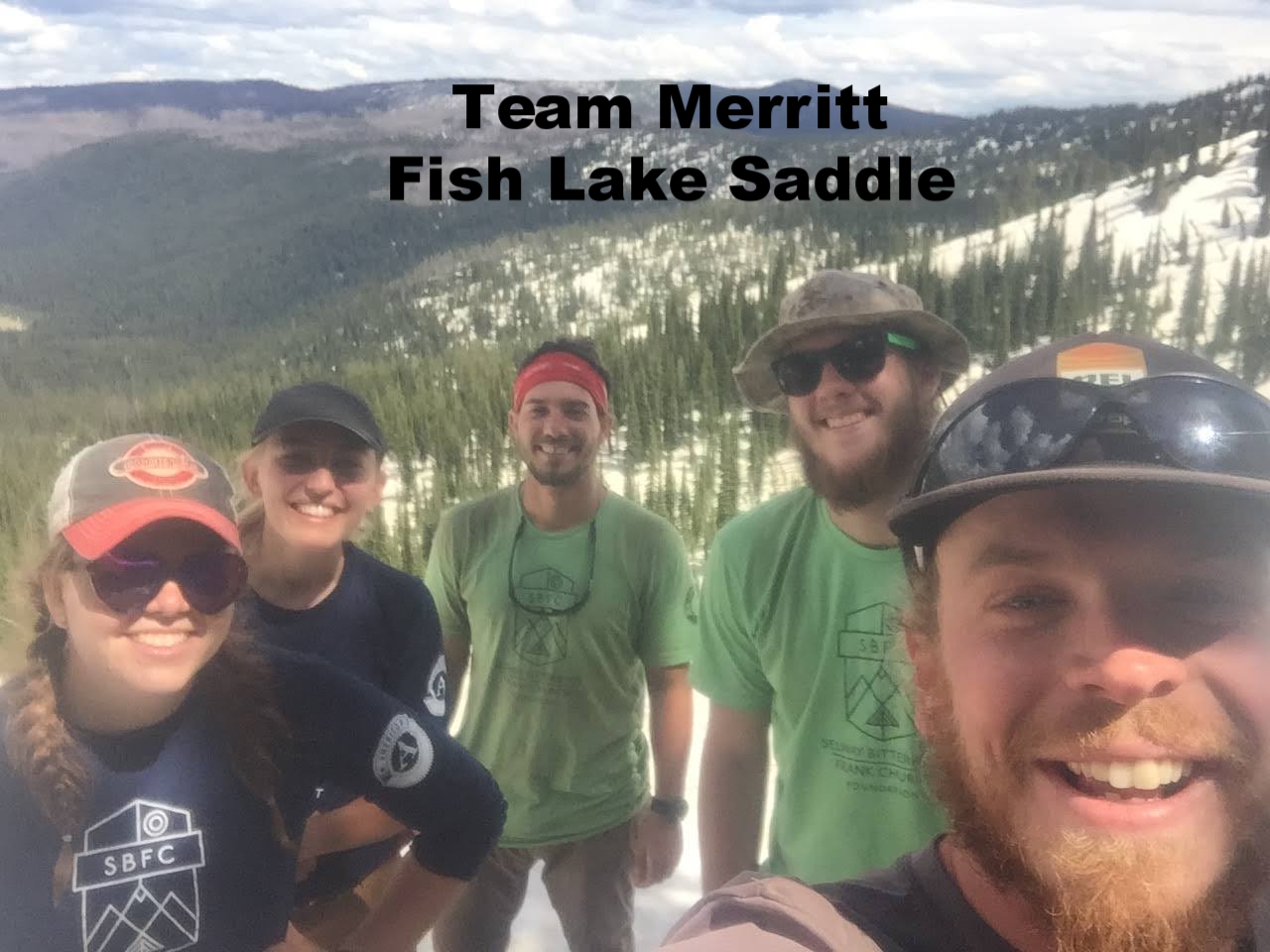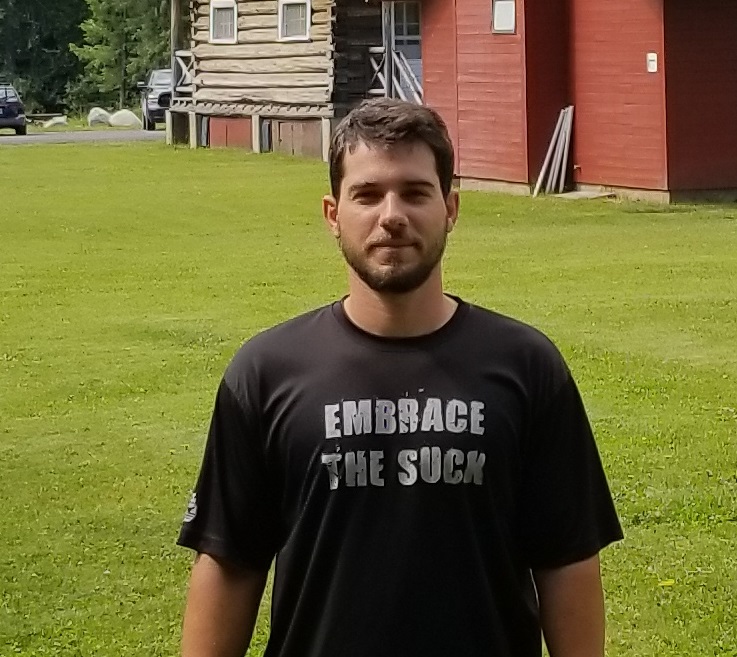It made me pause for a second, and I don’t quite know why. Maybe it’s because it looked like home--the lichen-speckled rocks, the warm sun, the high-altitude brush and the wide blue sky all reminded me of my own home in Flagstaff, Arizona. The familiarity pulled at me--after spending my semesters of college in Iowa, I craved sunshine, dry air, and horizons that never seemed to melt away.
Besides, this lookout looked ideal for book-reading and tea-sipping. And the mules in the photo looked like honest working folk that I could get along with.
A few clicks later I found myself faced with an application, something about wilderness and trail work, and something else about Montana and Idaho.
I applied for kicks and giggles and a few months later, BAM, I was just below that lookout in Stevensville. Yeah, it was all the fault of St. Mary’s Peak alright, and I really do mean that in the best way possible. I had been eager to do a trip with volunteers for a while, and a trip to the very lookout that had landed me here felt special. I would finally be going to the place that started it all for me. That was climatic for me considering that in just two months I felt as though I had come a very long way. I had experienced so many new things in such a short amount of time, and, more importantly, I had begun to correct a long list of 'facts’ that I had before the start of this internship. Some of these pre-SBFC training/Hitch 1 ‘facts’ include:
- Montana is a collection of small towns and Yellowstone National Park
- Wilderness is a flashy catchphrase for ‘woods’ and is used by the government haphazardly
- Snow disappears in March if not April across the planet except for Alaska, the Alps, and Siberia (oh and the poles but that’s a given).
- All rangers wear khaki
- ’Trail Work’ is an abstract idea that involves hiking, but also… other… things
- 50 pounds is probably easy to carry or at least do-able
- A crosscut is a felling technique that involves making a cut shaped like a cross. Probably.
There were more preconceptions that I had but we won’t get into those--the basics will do. Now, I’d like to offer a revised list of facts that I discovered after a month of training and my first hitch:
- Montana has small towns and Yellowstone BUT also other things
- It’s July and there’s still snow
- Most Rangers wear khaki
- Wilderness is a complex idea that is characterized by key several qualities (my favorite being opportunities for solitude)
- Trail work mostly involves cutting up trees but also includes moving dirt and rock and small shrubby things
- 50 pounds can often feel like 80 pounds if your pack’s hip strap isn't tight enough
- A crosscut is a type of saw that instantly makes you feel like some boss pioneer or Davy Crockett/Daniel Boone
There are still plenty of facts I have to revise, and I'm sure the rest of this summer will bring on countless opportunities that will further enlighten me. While all these facts highlight the major facets of my experience as a WRI, there is one aspect of this internship that I hadn't given a lot of thought to the volunteers. Now, volunteering isn't something that I've done a whole lot of--its one of those things that's always at the bottom of every 'to do’ list, the flyer that's been tucked away in that one kitchen drawer, the activity that every well-involved acquaintance is 'highly recommending’ you do. To me, volunteers were a nameless mass of matching t-shirts fueled by a burning love for 'The Community.’
That being said, I can now say that volunteers, at least the volunteers for SBFC that I met on this project, are hardly a nameless mass. They're so much more, and now, as cheesy as it sounds, I'll never think of volunteers in the same way. To explain what I mean, I’ll have to describe to you not the work these people did, or the conditions of the trail, or anything else, but instead the people themselves, the volunteers and staff of SBFC.
Our volunteer trip leader, Kate the Great, was ready to lead her first volunteer trip for SBFC. I can now confirm that Kate is one awesome leader. She's encouraging, calm, and able to critically think about how to tackle the trail, all while having a great sense of humor and phenomenal enthusiasm for the work.
Sally, SBFC’s Executive Director, annually comes on the St. Mary's project and has developed SBFC into a really incredible organization within the past years. She's kind, incredibly intelligent and hard-working, and the best possible person SBFC could have running it's major operations.
We were also so lucky to have Sue with us! Sue is SBFC’s PR person--she’s our behind the scenes magician who posted this blog post, lets the world know about SBFC, and documents the work we do. She also is a complete boss when it comes to trail work--on this project, her first hitch, she saved the stock portion of the St. Mary's trail from 75 saplings that were taking over the trail!
Beyond staff, we also had our volunteers:
Sam, a 2017 WRI for SBFC, came out to not only volunteer and clear trail but also to offer some pro tips on the crosscut! His clear pointers helped our whole group learn how to use the crosscut safely and effectively and his humor kept everyone in high spirits!
Daneel, a local Montanan, also came out to volunteer with us. As one of the fastest hikers I've ever seen, Daneel cleared over 50 drains, front kicked a tree in half (it was amazing) and baked the most delicious 'power cookies’ that I'm certain are the key to her invincible strength. Oh, she also lifts because what can't this 73-year-old do?
Catherine was another volunteer who came all the way from California to do this project! She was a real go-getter and boldly tackled her first hitch ever with a calm cool and some sweet sunglasses that definitely make her the most fashionable person to wield a pickaxe ever. Her hard work helped us crosscut our way up the St.Mary’s trail and brush through the stock trail!
Karen drove 6 hours from Idaho to be with us! As a frequent volunteer of trail work, her comfortability with the Pulaski and the hard work of the trail made her a total joy to work with! She always had a positive attitude and took to the crosscut like a pro!
Sheryl worked professionally on trail crews over in the Bob Marshall wilderness and will be up at the St. Mary peak as a lookout later this summer! She's one tough cookie who knows her way around trail work and was so helpful to have around through all the brushing, crosscutting, and drain clearing of our project. Her knowledge of the area’s history also made for a great mountain-top afternoon! There's nothing like looking down at the Bitterroot Valley and learning its fascinating history.
Last but not least, we have our hosts! The lovely Jay and Renee have been hosting SBFC's St. Mary's volunteer project for four years. They let us camp on their gorgeous property right under the peak and even cooked us a delicious (my mouth is watering just thinking about it) dinner! Renee also joined us to clear drains and brush out the trails which was super awesome. They're also incredible hosts and it was unbelievably fun to kick back and relax with them after a hot day of trail work.
With these awesome people, I'm proud to report that SBFC has once again cleared another rad Bitterroot trail. With a total of 4 crosscut trees, 113 saplings, and 233 drains, our weekend of work will help stock and people safely navigate the breath-taking trail up to the St. Mary lookout. We had so many incredible moments and considering that it was one weekend, we got a lot of work done. And, luckily enough for me, I have another fact to add to my growing list: volunteers are not a nameless mass. They're people. Incredible, unique, passionate, hard-working people. They’re out there sacrificing their precious free time to do hard work for the community, for the wilderness, for the trail, and just because. It's amazing. The sincerity, dedication, and kindness of the people I met this weekend was so inspiring and empowering.

